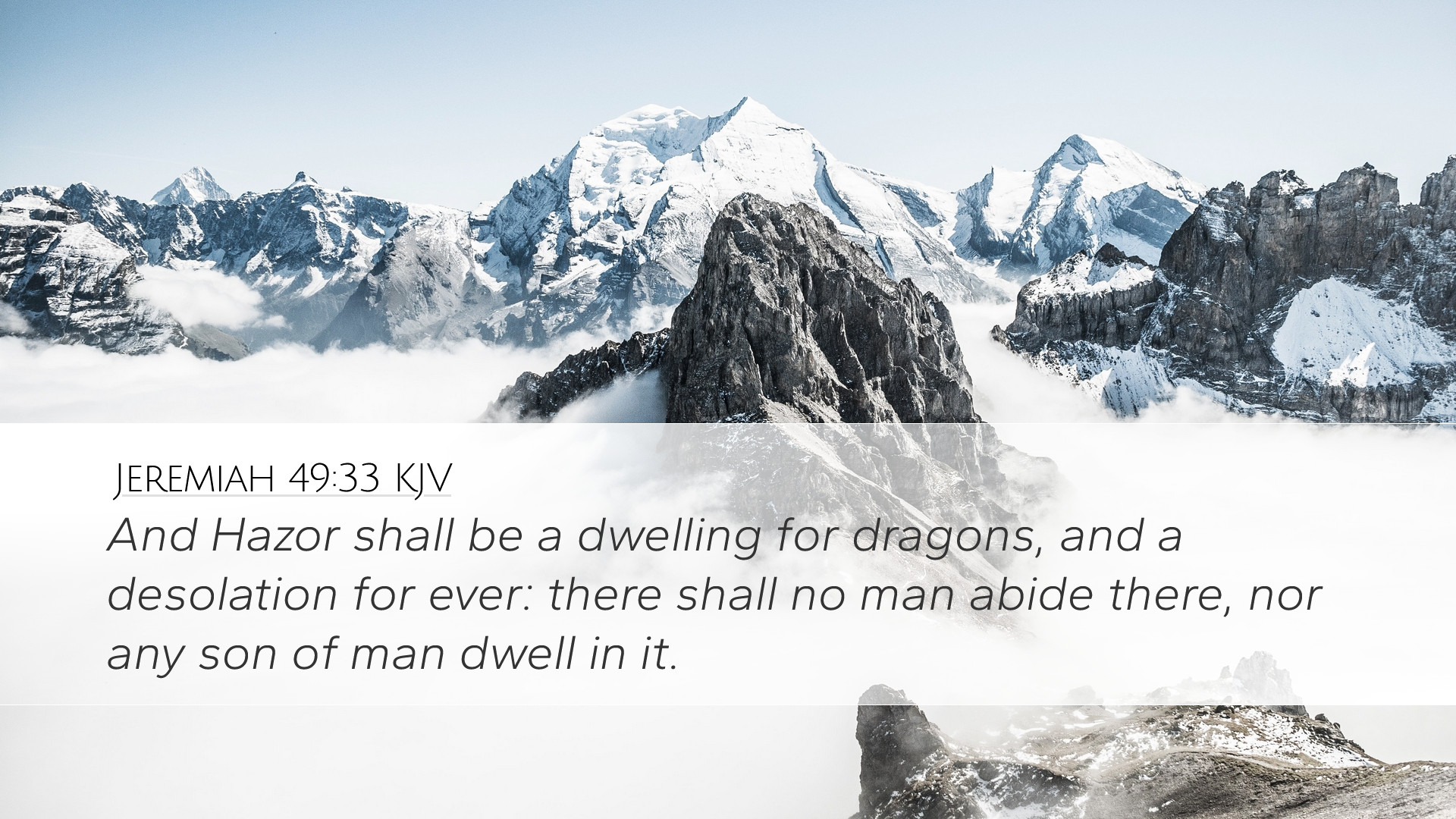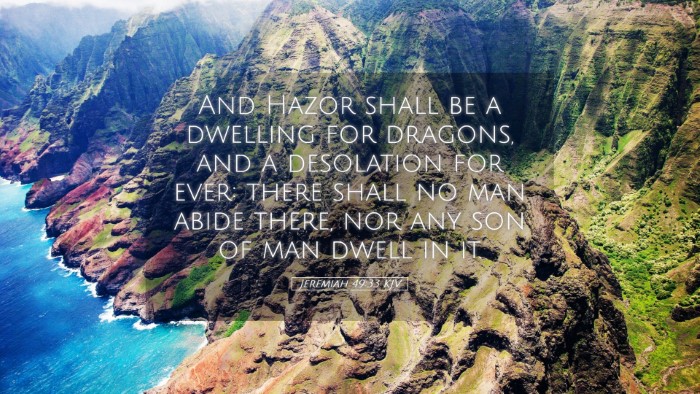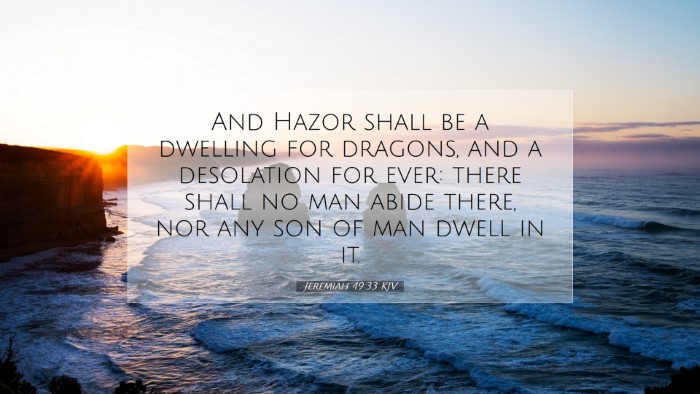Commentary on Jeremiah 49:33
Verse: "And Hazor shall be a dwelling for dragons, and a desolation for ever: there shall no man abide there, nor any son of man dwell in it." (Jeremiah 49:33)
Introduction
This verse from the Book of Jeremiah serves as a prophetic declaration concerning the city of Hazor, emblematic of judgment and desolation. The depths of its implications reach beyond mere geographical references, touching on broader theological themes related to judgment, divine sovereignty, and the consequences of sin.
Historical Context
Hazor was once a prominent city in the ancient Near East, known for its strategic importance and wealth. However, due to its idolatrous practices and opposition to the covenant people of Israel, it became a target of prophetic condemnation. Understanding the historical context of Hazor sheds light on the profound significance of this prophecy within the broader narrative of Israel's relationship with God.
Matthew Henry's Insight
Matthew Henry offers extensive observations on the ruin of Hazor, interpreting it as a representation of those cities and nations that defy divine authority. He likens Hazor to any place where evil prevails, asserting that, in the face of God’s judgment, "the places of pride become places of desolation." Hazor's fate serves as a reminder of the temporal nature of human constructs in contrast to the eternal nature of divine justice.
Albert Barnes' Observations
Albert Barnes frames this verse within the theme of God's retribution against the enemies of Israel. He elaborates on the phrase "a dwelling for dragons" as indicative of utter desolation. Barnes emphasizes that the abandonment of the city signifies the complete withdrawal of God’s favor, reflecting a broader theological principle that the absence of divine presence leads to ruin and chaos.
Adam Clarke's Commentary
Adam Clarke deepens the analysis by discussing the metaphor of "dragons," which could symbolize both destruction and chaos. He highlights the implications of this imagery, noting that it illustrates not only physical desolation but also spiritual abandonment. Clarke’s insights elucidate the idea that when nations turn away from God, they do not only invite calamity upon themselves but transform into places associated with evil and danger.
Theological Themes
- Divine Judgment: The scriptures reveal that divine judgment is certain and often executed through geopolitical events.
- Covenantal Fidelity: The fate of Hazor serves as a warning regarding the consequences of forsaking one's covenantal obligations to God.
- Symbolism of Desolation: The imagery used here underscores the concept that desolation is not merely physical but also spiritual.
Implications for Contemporary Readers
This passage presents critical considerations for modern believers, particularly regarding the relationship between sin and national fate. The desolation of Hazor serves as a sobering reminder that nations, communities, and individuals alike must heed the call to righteousness to avoid similar fate.
Application for Pastors
Pastors are encouraged to draw parallels between ancient judgments and contemporary scenarios, imparting wisdom about the nature of divine justice while also pointing towards hope and redemption through Christ.
Guidance for Students and Theologians
For students of theology and scholars of Scripture, this verse encourages deep engagement with the texts of the Old Testament. It invites further exploration of prophetic literature and the enduring relevance of such judgments in a modern context.
Conclusion
Jeremiah 49:33 stands as a profound testament to the consequences of sin and the reality of divine judgment. The combined insights from public domain commentaries reveal a rich tapestry of interpretation that underscores the gravity of turning away from God. As scholars, pastors, and students reflect upon this passage, they are reminded of the complex interplay between historical context, theological implications, and the ever-relevant call to fidelity in faith.


